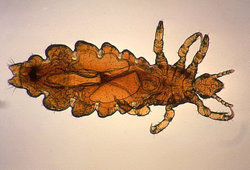When a child comes home from school with head lice and a note from the school nurse, parents usually experience a variety of emotions. According to a survey by Harris Interactive for SafeTek Lice Removal Kit, 54% of women indicated they were embarrassed to learn that they or a family member had head lice, 52% were disgusted, 27% felt panic, while 66% reported "concern."
"In reality, there is nothing to be panicked or embarrassed about; head lice do not carry diseases and even the cleanest children get them," declares Cheri Hayes, certified school nurse and author of There's a Louse in My House. "With children constantly sharing personal items and partaking in close group activities, it is no surprise that head lice are easily spread."
From kids sharing brushes, combs, helmets, and head phones, head lice are passed from one child to another, which translates to millions of missed school days.
While there is no connection between poor hygiene and head lice, 50% of women worry that, if their child came down with a case, other parents would think their home is dirty and unsanitary. Forty percent of women with children in their household either have experienced firsthand or had a family member who has had head lice; this increases to 50% in those homes with five or more members. Health experts estimate that there are 10-12,000,000 cases of head lice per year, with 80% of school districts reporting outbreaks.
Half of respondents mistakenly believe that lice can jump from child to child, while 22% think that children with longer hair are more at risk for head lice and that lice carry disease. (Incidentally, all of these beliefs are false.) However, it is true that 74% of respondents who have children living in their household admit that their offspring share combs, brushes, hats, or helmets with them, siblings, or friends.
Forty-four percent feel that lice removal shampoos containing pesticides are dangerous to children's health and 33% maintain that lice are becoming resistant to these pesticides.
COPYRIGHT 2005 Society for the Advancement of Education
COPYRIGHT 2005 Gale Group



